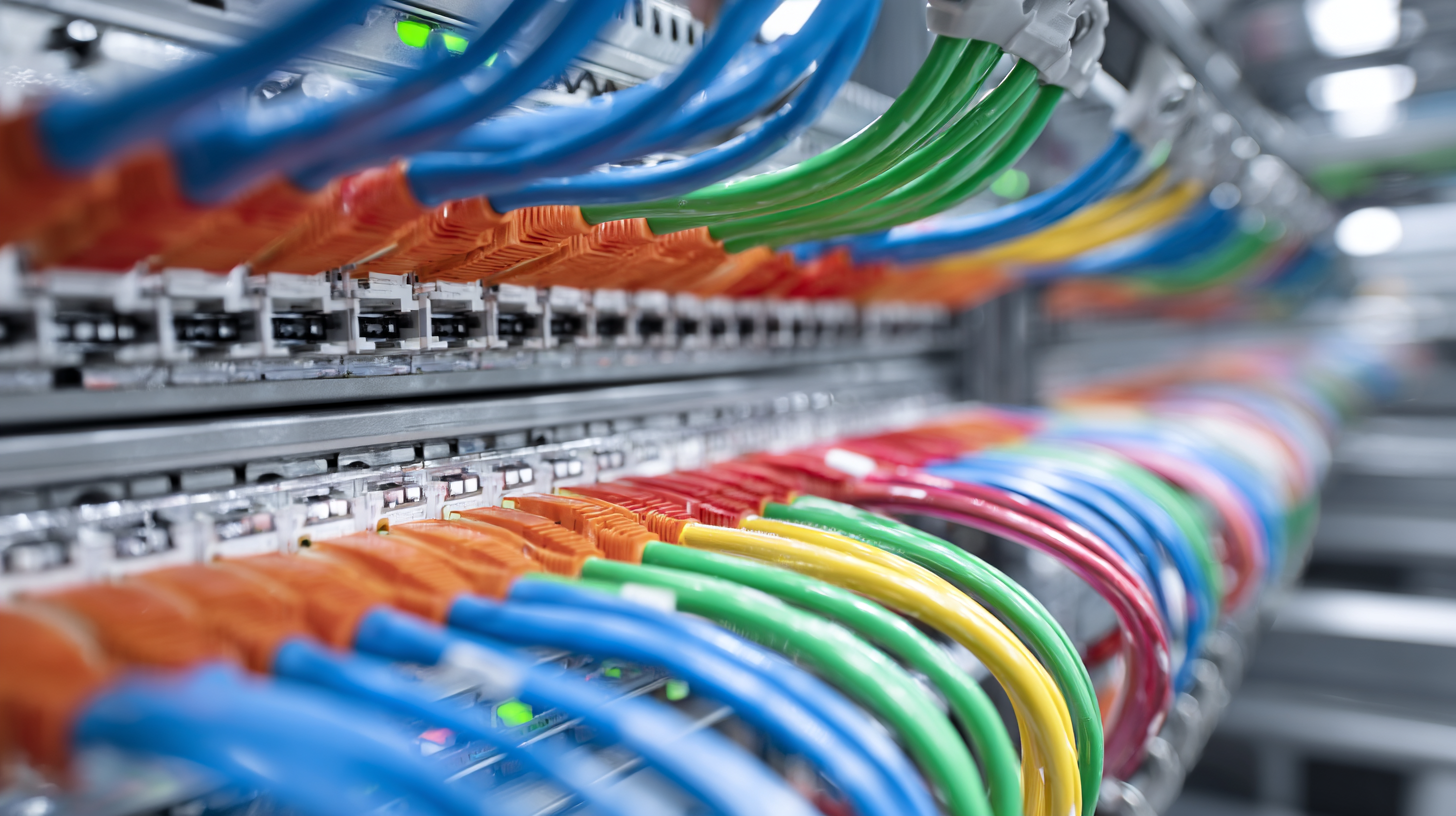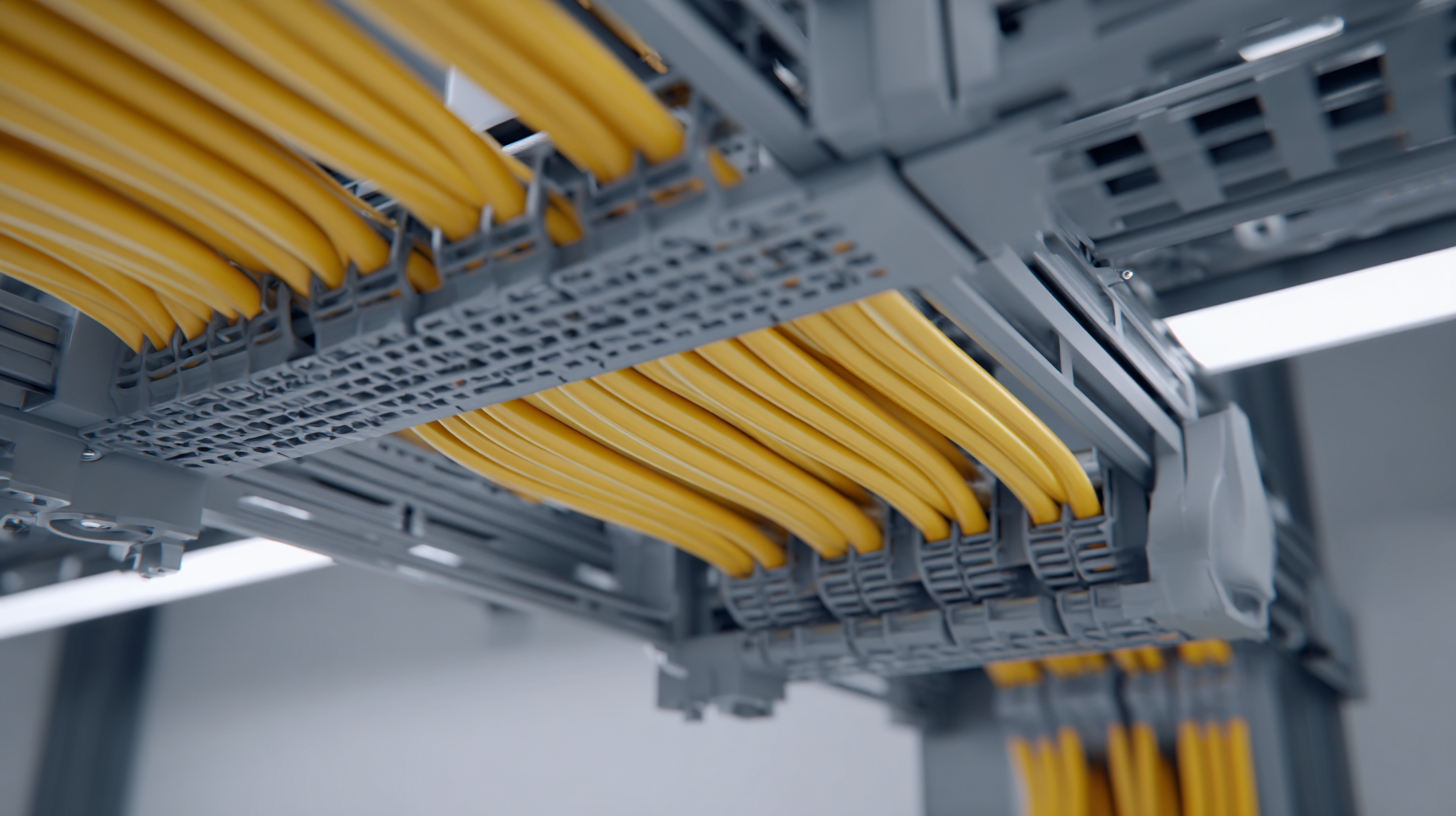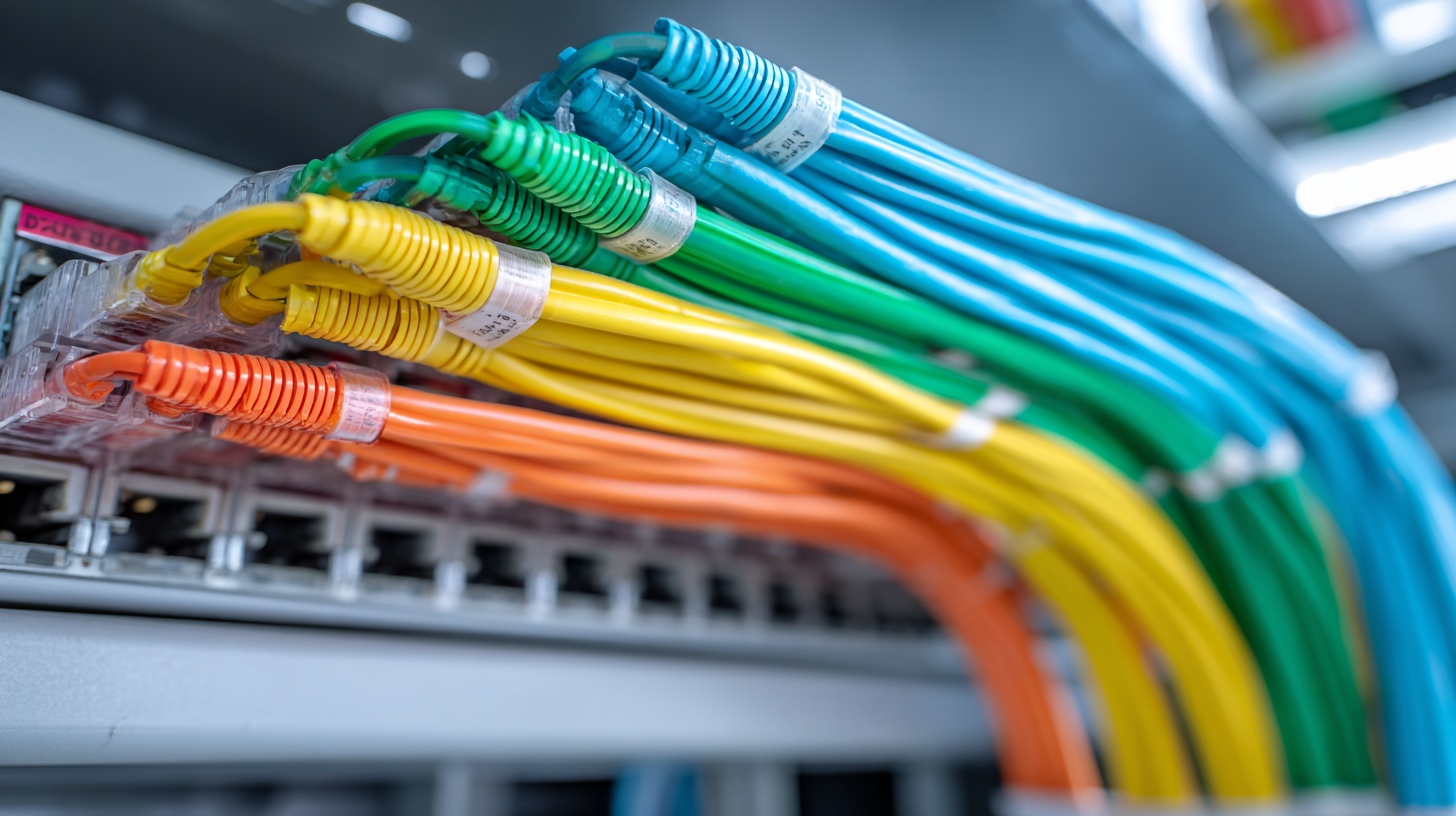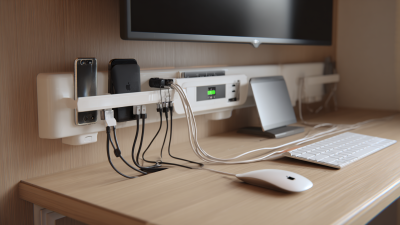Understanding the Importance of Duct Cable in Modern Communication Systems
In the rapidly evolving landscape of modern communication systems, the significance of duct cable cannot be overstated. As industries increasingly rely on high-speed data transmission, duct cables serve as the backbone of infrastructure, facilitating seamless connectivity across various platforms. According to a report by the International Telecommunication Union (ITU), global internet usage is projected to reach approximately 5.3 billion users by 2023, necessitating robust and efficient cable solutions. Furthermore, a market research study from Mordor Intelligence indicates that the global duct cable market is expected to grow at a CAGR of 6.5% from 2020 to 2025, driven by the demand for advanced telecommunication systems and the expansion of fiber optic networks. These statistics highlight the critical role duct cable plays in ensuring reliable and high-quality communication, emphasizing its importance in the ongoing digital transformation across industries.

The Role of Duct Cables in Increasing Bandwidth for Modern Networks
Duct cables play a critical role in modern communication systems, particularly in enhancing the bandwidth capabilities of networks. As the demand for high-speed internet and extensive data transmission grows, the effectiveness of duct cables in accommodating these needs becomes paramount. By utilizing advanced materials and innovative designs, duct cables are capable of supporting higher data rates while maintaining signal integrity over long distances. This makes them an indispensable element in the infrastructure of contemporary telecommunications.
Moreover, the flexibility and scalability of duct cables contribute significantly to network efficiency. In a landscape where bandwidth consumption is surging—driven by streaming services, cloud computing, and IoT devices—duct cables facilitate the expansion of network capacity without necessitating a complete overhaul of existing systems. Their ability to adapt to varying network demands ensures that communication systems can effectively manage increased traffic, ultimately leading to enhanced user experiences across various platforms. This adaptability does not only lessen operational costs but also streamlines the deployment of future technologies in the ever-evolving field of communication.
Key Industry Standards Guiding Duct Cable Installation and Maintenance
Duct cables are vital components in modern communication systems, and adhering to key industry standards during their installation and maintenance is essential for ensuring optimal performance. The International Organization for Standardization (ISO) provides guidelines that influence the design and usage of duct cables, particularly in data centers and telecommunications networks. According to a 2021 report from the Telecommunications Industry Association (TIA), adherence to specified standards can reduce network downtime by up to 40%, significantly enhancing reliability and efficiency.
Furthermore, the Institute of Electrical and Electronics Engineers (IEEE) has established rigorous standards that outline the necessary specifications for duct cable materials and installation techniques. For instance, the IEEE 802.3 standard emphasizes the importance of minimizing electromagnetic interference during installation to ensure signal integrity, which can affect data transmission rates. The National Electrical Manufacturers Association (NEMA) also publishes guidelines that recommend regular maintenance schedules and inspection protocols, ensuring that the duct cables remain operational and compliant with evolving technological demands. By following these standards, communication providers can maintain robust networks capable of supporting the increasing data traffic generated by modern applications.
Understanding the Importance of Duct Cable in Modern Communication Systems
| Aspect | Description | Industry Standards | Maintenance Recommendations |
|---|---|---|---|
| Material | Duct cables primarily consist of copper or fiber optics, chosen based on distance and speed requirements. | ANSI/TIA-568 | Inspect annually for wear and replace any damaged cables. |
| Installation Environment | Cables should be installed in controlled environments to minimize exposure to elements. | IEC 60794 | Ensure proper sealing and protection against moisture and pests. |
| Performance Testing | Regular testing for signal loss and functionality is crucial for performance monitoring. | ISO/IEC 11801 | Conduct performance tests at installation and annually thereafter. |
| Documentation | Maintaining detailed records of installation, testing, and maintenance helps in future troubleshooting. | TIA/EIA-606 | Keep updated records of any changes or repairs made. |
Comparative Analysis of Duct Cable Types: Fiber Optic vs. Copper
In the ever-evolving landscape of modern communication systems, the choice of duct cable plays a pivotal role in determining efficiency, speed, and reliability. A comparative analysis between fiber optic and copper duct cables reveals significant differences that can influence performance outcomes in various applications. According to the Global Fiber Optic Cable Market report, the demand for fiber optic cables is projected to grow at a CAGR of 10.2% between 2021 and 2026, attributed to their superior data transmission capabilities and bandwidth efficiency.
 Fiber optic cables are known for their ability to transmit data at incredibly high speeds over long distances with minimal signal loss. Studies show that fiber can handle bandwidths of up to 1 Tbps (terabits per second), vastly outperforming traditional copper cables, which typically offer speeds up to 1 Gbps (gigabit per second). Furthermore, fiber optic installations are more resistant to electromagnetic interference, making them ideal for environments with significant electrical noise. On the other hand, copper cables remain prevalent in legacy systems where cost and ease of installation are primary concerns, but their limitations in speed and distance are increasingly evident as technology advances.
Fiber optic cables are known for their ability to transmit data at incredibly high speeds over long distances with minimal signal loss. Studies show that fiber can handle bandwidths of up to 1 Tbps (terabits per second), vastly outperforming traditional copper cables, which typically offer speeds up to 1 Gbps (gigabit per second). Furthermore, fiber optic installations are more resistant to electromagnetic interference, making them ideal for environments with significant electrical noise. On the other hand, copper cables remain prevalent in legacy systems where cost and ease of installation are primary concerns, but their limitations in speed and distance are increasingly evident as technology advances.
As industries strive to keep pace with growing data transmission demands, transitioning to fiber optic duct cables becomes not just a trend but a necessity. The International Telecommunication Union (ITU) has emphasized the importance of upgrading infrastructure, noting that nations investing in fiber optics see enhanced digital economies. This shift reflects a broader realization that modern communication systems require reliable and efficient solutions, with fiber optic technology at the forefront of that evolution.
Impact of Duct Cable on Network Reliability and Downtime Reduction
Duct cable plays a crucial role in modern communication systems, particularly in enhancing network reliability and minimizing downtime. As telecommunications infrastructure evolves to meet the increasing demands for bandwidth and low latency, advanced duct cables have become essential. According to industry reports, fiber optic networks significantly reduce average downtime, with some studies indicating that proper installations can decrease outages by up to 90%. This is particularly relevant as recent events have demonstrated the vulnerabilities of above-ground networks, as seen in incidents where damaged networks caused service disruptions to thousands of premises.
The ongoing initiatives to underground power lines highlight the importance of robust cabling infrastructure. Regions investing in underground systems not only boost reliability but also mitigate risks associated with weather conditions and environmental factors. For example, the recent review of Bengaluru’s underground cabling project illustrates how strategic investments can lead to significant improvements in network stability. By transitioning to duct cables, organizations can fortify their communication channels against outages, thereby directly benefiting end-users.
**Tips:**
- Consider conducting regular assessments of your duct cable infrastructure to identify potential vulnerabilities.
- Stay informed about advancements in cable technology, as these innovations can enhance your network performance and reliability.
Impact of Duct Cable on Network Reliability and Downtime Reduction
This bar chart illustrates the correlation between the use of duct cable and network reliability metrics, showcasing the reduction in downtime across various sectors. The data reflect a significant improvement in system performance with the adoption of duct cables in modern communication systems.
Future Trends in Duct Cable Technology and Their Implications for Communication Systems
Duct cable technology plays a critical role in modern communication systems, particularly in light of the evolving challenges and threats influencing infrastructure security. As highlighted in recent analyses, undersea communication cables have become pivotal for national intelligence gathering, with their susceptibility to espionage becoming increasingly pronounced. According to industry reports, over 90% of international data traffic is transmitted via undersea cables, making them vital not only for communication but also as strategic points for potential risks from cyber threats.

Future trends in duct cable technology emphasize the need for enhanced security measures and innovations in cable design. The adoption of advanced materials and technologies, such as fiber-optic cables integrated with AI for real-time monitoring, is expected to mitigate some of these security concerns. Additionally, the development of cable harnessing techniques that include protective layers may further safeguard against both physical and digital vulnerabilities. Industry experts project that investments in duct cabling systems will reach over $20 billion by 2025, underscoring the critical importance of securing these communication lifelines as geopolitical landscapes continue to evolve.
Related Posts
-

The Ultimate Guide to Effective Cable Management Strategies for a Tidy Workspace
-

Ultimate Guide to Innovative Cable Holder Solutions for a Clutter Free Space
-

Revolutionize Your Workspace: Unleashing the Power of Innovative Cable Holders
-

10 Essential Tips for Installing Electric Cable Ducts Safely and Effectively
-

Maximizing Efficiency: How Electric Cable Ducts Improve Cable Management and Reduce Risks in Modern Infrastructure
-

Maximizing Electrical Safety: The Essential Role of Cable Ducts in Modern Infrastructure

